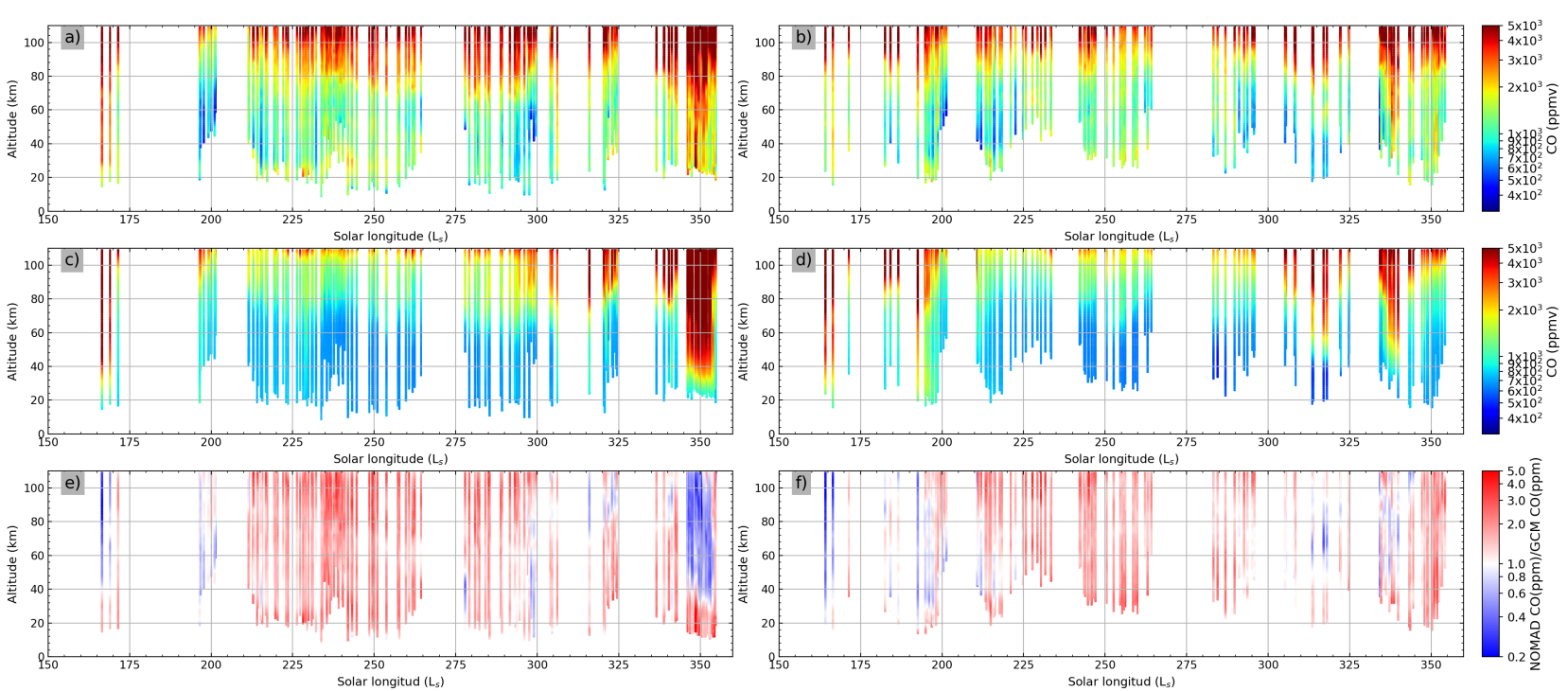2023 (JGR) https://doi.org/10.1029/2022JE007282 http://oro.open.ac.uk/87558/1/87558.pdf
Ashimananda Modak, Miguel Angel López-Valverde, Adrian Brines, Aurélien Stolzenbach, Bernd Funke, Francisco González-Galindo, Brittany Hill, Shohei Aoki, Ian Thomas, Giuliano Liuzzi, Gerónimo Villanueva, Justin Erwin, José Juan Lopez Moreno, Nao Yoshida, Udo Grabowski, Francois Forget, Frank Daerden, Bojan Ristic, Giancarlo Bellucci, Manish Patel, Loic Trompet, Ann Carine Vandaele
We present CO density profiles up to about 100 km in the Martian atmosphere obtained for the first time from retrievals of solar occultation measurements by the Nadir and Occultation for Mars Discovery (NOMAD) onboard ExoMars Trace Gas Orbiter (TGO). CO is an important trace gas on Mars, as it is controlled by CO2 photolysis, chemical reaction with the OH radicals, and the global dynamics. However, the measurements of CO vertical profiles have been elusive until the arrival of TGO. We show how the NOMAD CO variations describe very well the Mars general circulation. We observe a depletion of CO in the upper troposphere and mesosphere during the peak period, LS = 190°–200°, more pronounced over the northern latitudes, confirming a similar result recently reported by Atmospheric Chemistry Suite onboard TGO. However, in the lower troposphere around 20 km, and at least at high latitudes of the S. hemisphere, NOMAD CO mixing ratios increase over 1,500 ppmv during the GDS (Global Dust Storm) onset. This might be related to the downwelling branch of the Hadley circulation. A subsequent increase in tropospheric CO is observed during the decay phase of the GDS around LS = 210°–250° when the dust loading is still high. This could be associated with a reduction in the amount of OH radicals in the lower atmosphere due to lack of solar insolation. Once the GDS is over, CO steadily decreases globally during the southern summer season. A couple of distinct CO patterns associated with the Summer solstice and equinox circulation are reported and discussed.

Comparison of PCM CO densities with the retrieved ones. The top panels a and b show the retrieved CO VMR. Panels c and d show the PCM CO mixing ratios and panels e and f show the ratios NOMAD/PCM. Left panels (a, c, and e) correspond to the Northern Hemisphere and right panels (b, d, and f) to the Southern Hemisphere.

